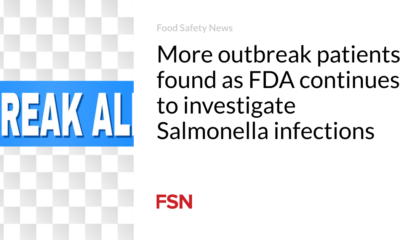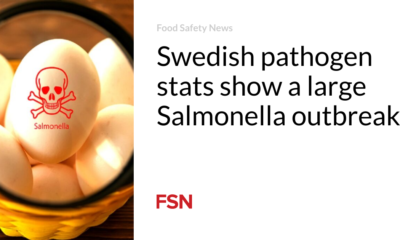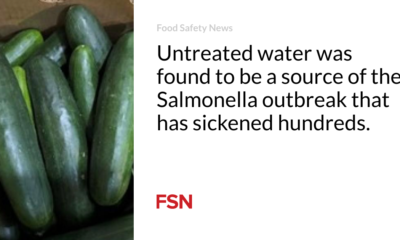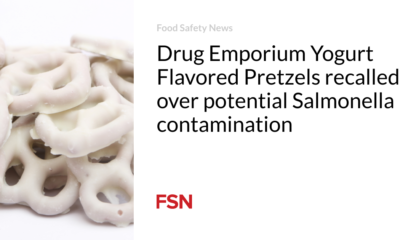Food
The source of rare Salmonella cases in China remains unknown
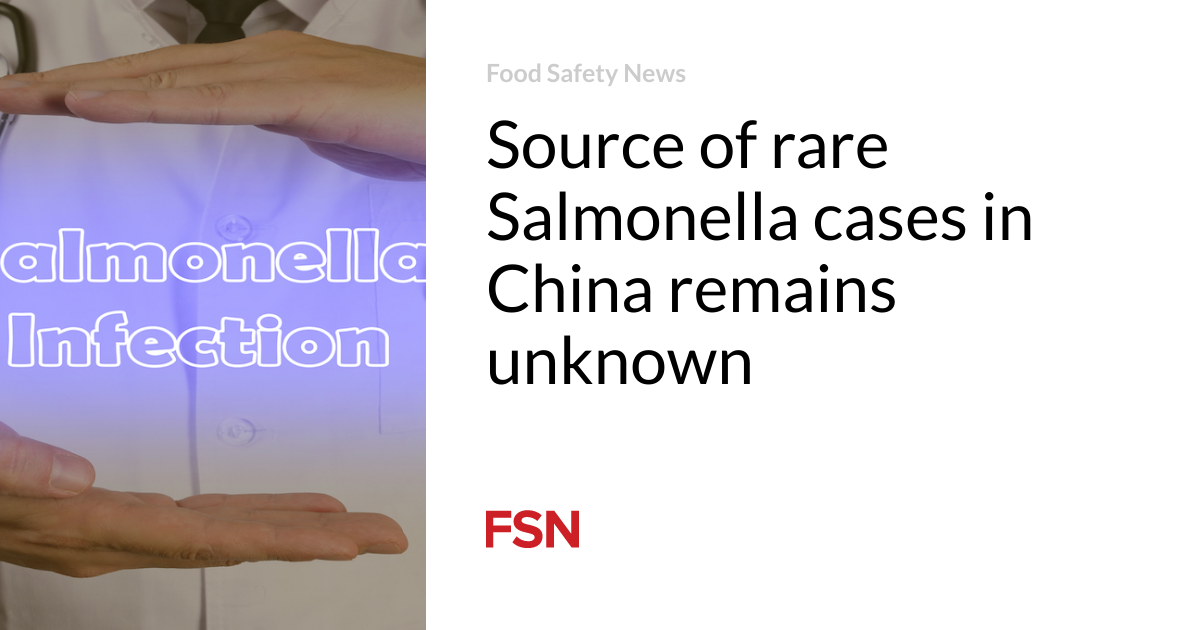
Scientists have been unable to find the source of a rare form of Salmonella that has affected some people in China.
Two children with diarrhea visited a healthcare facility within 24 hours in August 2023. Salmonella Grumpensis was found in stool samples by a public health laboratory in Shanghai.
According to the study published in China CDC Weeklythe local Chinese Salmonella genome database contained no recorded occurrences of the serotype, indicating it is a rare event.
Scientists say the discovery of two copies of this unusual serotype within 24 hours is a warning sign of a possible outbreak and underlines the pathogen’s transmission potential.
Two young boys, ages 1 and 2, attended the hospital in August with similar clinical symptoms of bloody diarrhea and abdominal pain.
A gap in understanding
Initial findings showed no evidence of typical sources of infection such as eating out, travel, contact with symptomatic individuals, consumption of raw water, undercooked food or owning pets. The epidemiological investigation did not identify a likely source due to limited data, but the possibility of a shared infection was considered feasible.
Laboratory staff collected samples from the household of one case. They include stool from family members, uneaten food and cotton swabs. No Salmonella was detected.
The results of whole-genome sequencing suggested a strong genetic similarity of both isolates, indicating a common source.
Analysis of 51 Salmonella Grumpensis genomes in the NCBI database showed it had been found in 11 countries, with the highest numbers in Spain, the United Kingdom and the United States. Strains were isolated between 2005 and 2023 and sample types included human, food, plant and poultry.
“The limited availability of information on Salmonella Grumpensis globally highlights a gap in understanding its sources and transmission patterns. This serotype has been found worldwide in 11 countries and regions since 2005, with sources ranging from animal products to plant products such as chili powder,” scientists said.
“This study highlights the critical contribution of public health laboratories in identifying and addressing outbreaks of unusual Salmonella serotypes. It underlines the common dilemma faced by public health departments in confirming outbreaks that exhibit typical characteristics but are difficult to confirm through regular surveillance due to small numbers of cases or unidentified sources.”
Prevalence and diversity of pathogens in Beijing
Researchers examined 1,011 stool samples within for suspected foodborne illnesses another study and found 35 pathogens. The analysis indicated a significant presence of Clostridium perfringens, Salmonella, enterotoxigenic E. coli (ETEC) and adenovirus. Co-infections were also identified in 720 samples.
From January 2022 to April 2023, scientists studied stool samples from patients diagnosed with foodborne illnesses at 28 hospitals in Beijing.
Clostridium perfringens had the highest positivity rate of the samples analyzed at 52 percent, followed by Salmonella, ETEC and adenovirus. Enteropathogenic E. coli (EPEC) and enteroaggregative E. coli (EAEC) were also common.
Pathogens found in 5 to 15 percent of samples included Staphylococcus aureus, Campylobacter jejuni, rotavirus, Vibrio parahaemolyticus, Shigella/Enteroinvasive E. coli (EIEC), Cronobacter, Aeromonas spp., norovirus, and Vibrio cholera.
Most co-infections involved one, two or three pathogens, with up to nine pathogens detected in rare cases.
Researchers say the detection of Clostridium perfringens is interesting, but it does not indicate a pathogenic role in all cases.
“This finding highlights the critical need to distinguish between true pathogens and commensal organisms in the gastrointestinal tract, and provides insights for future efforts to identify bona fide pathogens.”
Scientists plan to expand sample collection efforts and conduct assessments between the results of culture-independent diagnostic tests (CIDT) and traditional culture methods.
(To sign up for a free subscription to Food Safety News, click here.)



